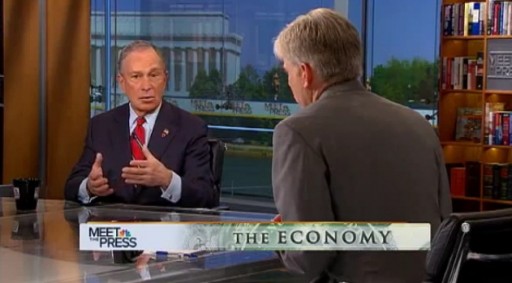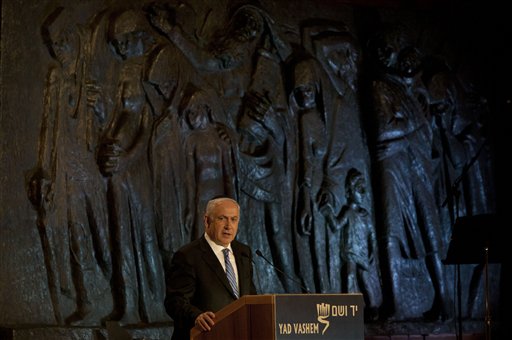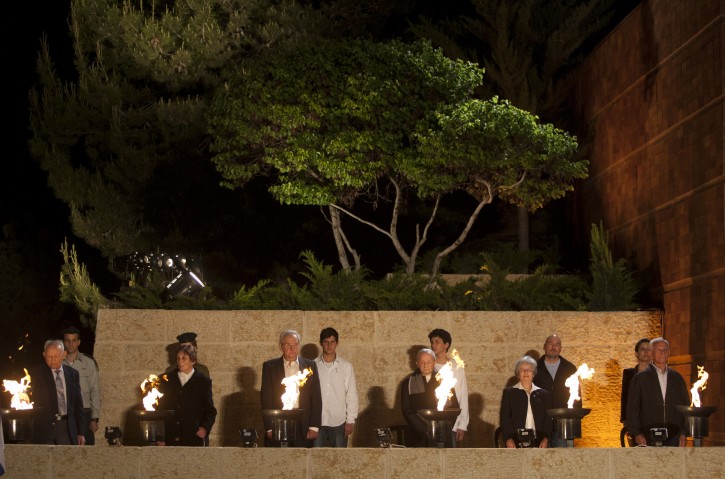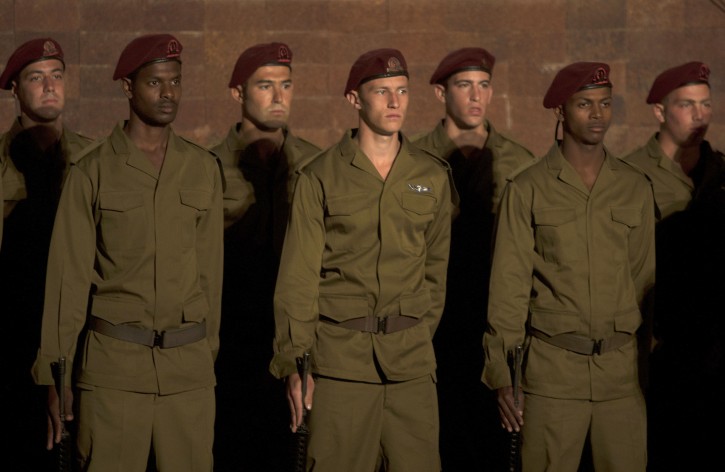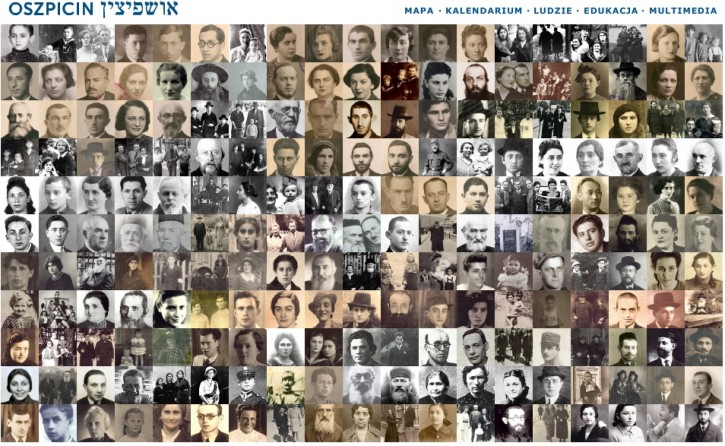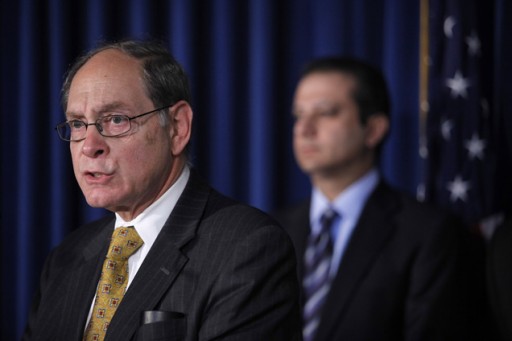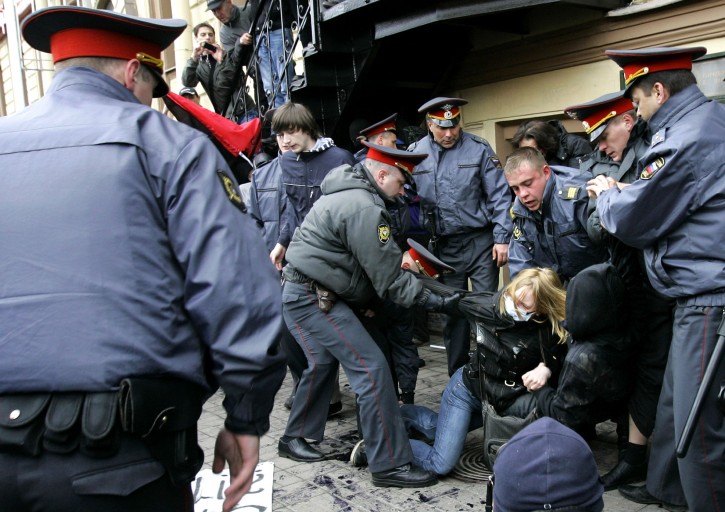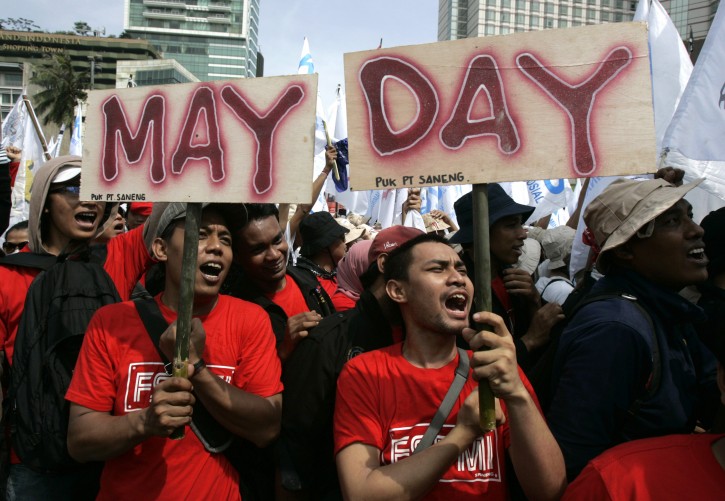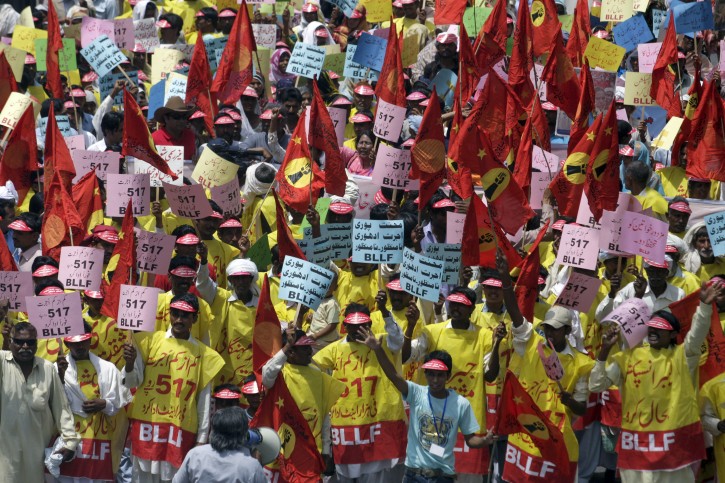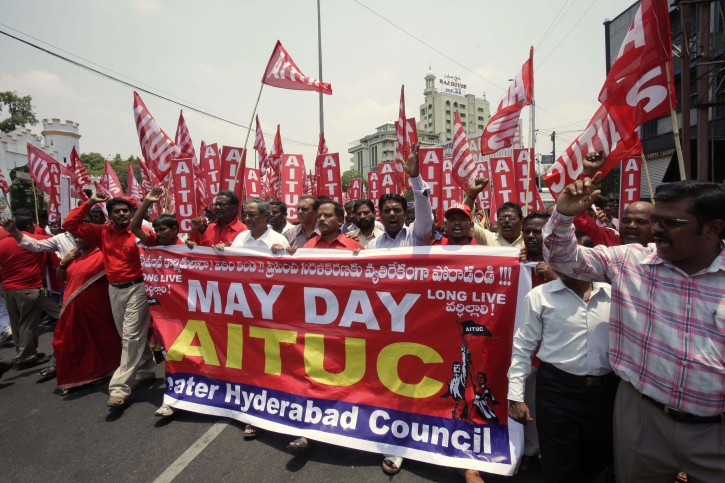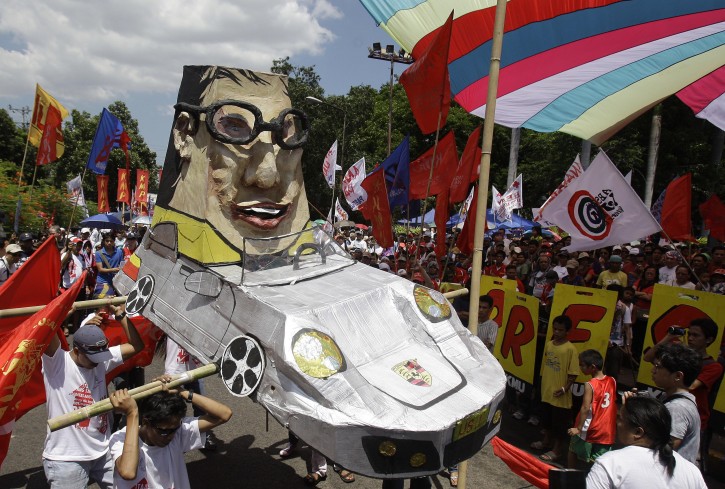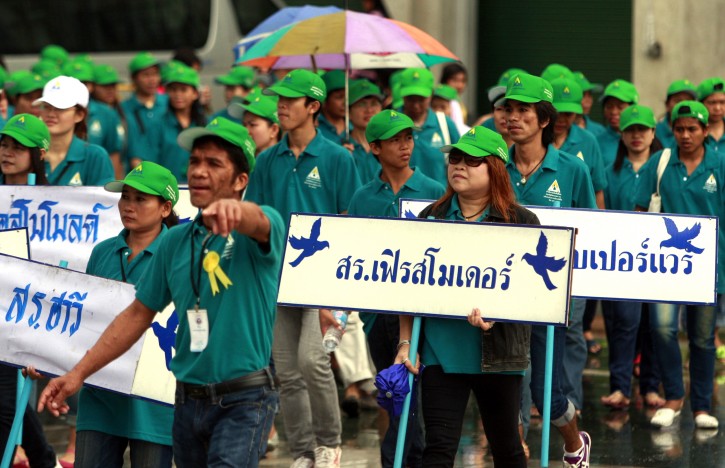 New York – English speakers throughout the world still benefit from the wisdom and eloquence of Rav Avigdor Miller ztz”l, whose unforgiving schedule produced countless shiurim and lessons that continue to educate after his passing. But there’s an unlikely group of Yiddish speakers in a little pocket in Williamsburg who see Rav Miller as their rebbe, too. Led by Rav Avraham Shlomo Yavo, the chassidim of Nitei Avigdor retain their chassidish identities even as they imbibe the approach and ideals of an avowed Litvack. In honor of his rebbe’s tenth yahrtzeit, Rav Yavo shares his own memories of a precious relationship, his pain at his rebbe’s passing, and the role he’s played in ensuring that Rav Avigdor’s legacy remains firm and enduring
New York – English speakers throughout the world still benefit from the wisdom and eloquence of Rav Avigdor Miller ztz”l, whose unforgiving schedule produced countless shiurim and lessons that continue to educate after his passing. But there’s an unlikely group of Yiddish speakers in a little pocket in Williamsburg who see Rav Miller as their rebbe, too. Led by Rav Avraham Shlomo Yavo, the chassidim of Nitei Avigdor retain their chassidish identities even as they imbibe the approach and ideals of an avowed Litvack. In honor of his rebbe’s tenth yahrtzeit, Rav Yavo shares his own memories of a precious relationship, his pain at his rebbe’s passing, and the role he’s played in ensuring that Rav Avigdor’s legacy remains firm and enduring
Williamsburg, Friday afternoon, near sundown. A blur of shtreimlach and beketshes fills the street, as chassidim young and old rush off to shul. Each one heads to his rebbe, to the Chassidus toward which he feels a particular pull, to greet Shabbos on a spiritual uplift.
On Rutledge Street, seventy families form a parade of their own, heading to a modest basement shul. They too hope to be inspired by the words of their rebbe, to be enthralled with the spirit of Shabbos. There are two differences, however. One, their rebbe is not alive anymore — and many of the chassidim never met him, though they have heard plenty of his drashos. More surprisingly, their rebbe doesn’t wear chassidish levush. In fact, he was an avowed Litvack throughout his life.
The shul they are headed to is Nitei Avigdor, named for their rebbe, Rav Avigdor Miller ztz”l. And his impact on these chassidim, while unexpected, is firm and enduring.
The Litvishe Rebbe Rabbi Avraham Shlomo Yavo, the Lemberger Rav, is the founder and leader of the Nitei Avigdor community. Known throughout the chassidishe world for his absolute mastery of Shas — he can quote lengthy passages from anywhere in Shas, and can source any statement of Chazal off the top of his head — Rav Yavo became a devout chassid of Rav Avigdor Miller seventeen years ago. His time is precious, with many sheilos pouring in even as we speak, but he sets aside an hour to discuss his rebbe, and how it came to pass that so many chassidim became drawn to the teachings of a litvishe mashgiach.
“I was always a mevakesh,” he begins, “and one time, a close friend told me that there was this amazing shiur in Nach every Motzaei Shabbos delivered by a rav named Rav Avigdor Miller that I just had to attend. I went to try it, and really enjoyed it. But after about two months Rav Avigdor got up after the shiur and apologetically announced that he would have to discontinue the series, because it was too difficult to maintain along with his otherwise packed schedule of weekly and daily shiurim. I was very disappointed, and when I expressed it to someone standing next to me, he informed me that the Rav also gave a shiur every Thursday night. ‘That shiur is even better than this one,’ he promised.”
There was a barrier, however — the language. As a Williamsburg native, Rav Yavo spoke almost no English, and barely even understood it. “Come anyway,” the fellow nudged when Rav Yavo tried to beg off. “You’ll see, you’ll understand.”
“That first shiur was life-altering,” recalls Rav Yavo. “He was speaking about thanking Hashem. The title of that tape is ‘We Live to Praise.’ I’ll never forget his memorable, sing-song. ‘Aleinu l’shabei’ach. What’s our purpose in this world? To praise Hashem.’
“Despite my misgivings, I understood about 90 percent of what he said, which was surprising, considering his rich vocabulary.
“I walked out of there thinking, this is my rebbe. From then on, for the last nearly seven years of his life, I didn’t miss a single shiur. It didn’t make a difference whether it was raining or snowing. I felt that I couldn’t miss a shiur. Even when I spent the day sick in bed, I found the strength to drag myself into Flatbush for the shiur.”
Rav Yavo is still nostalgic about those Thursday night drashos, and specifically by the way Rav Avigdor Miller could find inspiration in what we often take for granted. A common theme was Gadlo VeTuvo malei olam, which he would define as Hashem’s plan and purpose for the world. Rav Avigdor would often bring “props” to illustrate what he was describing.

“Once, he brought along apple seeds to show the wisdom of Hashem inherent in each apple tree,” relates Rav Yavo. “As he spoke about it, he got so excited that he started to throw the seeds out to the crowd, encouraging people to take one home and use it to study the greatness of Hashem.”
Next to Reb Avigdor’s seat in shul sat a bottle of water that he never drank from. What was it doing there? “He would often talk about the amazing miracle of water; what it was composed of and what it did for a person. He had purchased that bottle some fifty or sixty years earlier, and he kept it at his side as a ‘Shivisi Hashem l’negdi samid.’ Seeing that bottle there made him remember Hashem constantly.”
Anyone who has listened to one of the thousands of recordings Rav Avigdor Miller left behind knows about the famous question-and-answer sessions. For the last twenty minutes of the shiur, the audience could ask any question that came to mind. For Rav Yavo, this presented a long-awaited opportunity to receive answers to all his questions in hashkafah. “He was like an Urim V’Tumim. No matter what you asked him, he was ready with an answer — and each one was full of wisdom.”
As time went on, a close relationship developed between the two. Around twelve years ago, when the story of an alleged dibbuk circulated first through Eretz Yisrael and then throughout the world, Rav Yavo asked during the shiur whether the Rav felt that there was any truth to the claims. “Come after the shiur and we’ll discuss it,” was all Rav Avigdor would say.
After the shiur, Rav Avigdor led him into a hallway where they could discuss it privately. Many people tried to follow them, but Rav Avigdor told them to remain in the shul. “We began to discuss the issue at length. I tried to cite proofs for the concept of a dibbuk from different statements of Chazal, but he refuted every one. In many instances he told me that this conversation was not to be repeated, so as we were wrapping up, I asked him what I should tell the curious audience awaiting my return to the shul.
“‘Tell them that we don’t find any source for it in Shas or Chazal,’ he replied, ‘and we shouldn’t make an issue out of it.’”
An Unlikely Bond The unlikely bond between Rav Avigdor Miller and Rav Yavo went well beyond the weekly shiur. When Rav Yavo’s son turned three, he took the child to his “rebbe” just like any chassid would do. Rav Avigdor was very happy to take part in the simchah. He had the little chassidishe yingele stand on a chair, called the entire shul over, and began to compliment him on how bacheint (full of charm) he was. Then he cut his hair and showered him with brachos.
Rav Yavo would daven Selichos in Rav Avigdor Miller’s shul each Erev Yom Kippur and get a brachah for the new year. He would also go to greet his rebbe every Chol HaMoed, in keeping with Chazal’s teaching that one must do so. And he never missed Purim, an occasion when Rav Avigdor, though he wouldn’t drink, would be extremely emotional.
When Rav Avigdor Miller reached the age of ninety-three in 2001, he still looked like a young man. “He was so healthy that we were certain that he would live — and continue speaking — until at least 108,” Rav Yavo remembers. “My oldest son was very little back then, and I would dream about the time when he’d be old enough to attend the shiur with me.
“Then one Thursday night shortly after Purim, when the Rav arrived for the shiur, I noticed that his face had a yellowish tinge. He was able to concentrate and deliver his shiur seamlessly, but I got very nervous.”
Each Thursday night, Rabbi Miller would break for five minutes during the shiur, exactly when the tapes recording each lecture would have to be flipped. That evening, when his rebbe appeared unwell, Rav Yavo decided to use the break to find out if everything was okay. Preferring not to say anything aloud in front of the crowd, he took a piece of paper and wrote down his concern for the Rav’s health. Rav Avigdor read the note, but his response was just to smile and nod knowingly.
The next week, Rabbi Miller looked fine once again, and everything was back to normal. Two weeks later, on the last Thursday night before Pesach 5761/2001, Rav Avigdor delivered the shiur as always. “But one thing was strange,” says Rav Yavo. “The Rav used to title the tapes by himself. He named that tape Havdalah, which seemed to have no bearing on the topic.”
On Thursday of Chol HaMoed Pesach, Rav Yavo traveled in to the shiur as usual. A sign was hanging on the door with the notice “Sorry, but the shiur is canceled.” When Rav Yavo walked into the shul, he saw Rabbi Miller sitting with a Gemara. He went over to the Rav, greeted him with his usual “Shulem uleichu, rabi imori,” and then asked why there wouldn’t be a shiur that night. “I’m very weak,” Rabbi Miller answered.
“Can’t the Rav speak at least for a short time?” Rav Yavo persisted. “People travel in from Monsey, New Square, and many other places for the shiur. Shouldn’t there be at least something for them to hear?”
“Trust me,” he answered, “if you knew how weak I am, you would understand that I simply can’t speak.”
“On most Thursday nights,” continues Rav Yavo, “I would daven Maariv along with him in the shul. This time, I felt an urge to hear how he davened Shemoneh Esrei, so I decided to daven later and listen in while he davened. He would daven audibly enough for a listener to make out the words, and I positioned myself right behind him so I could hear him.
“Aside from how he enunciated each word carefully, there were two interesting things that I noticed. One was that during Refo’einu, he listed off at least twenty-five names of people in need of a refuah. Second was that when he davened VeliYerushalayim Ircha, Es tzemach Dovid, and anything else related to the Geulah, he did so with such hishtokekus, yearning for the Ultimate Redemption.
“I figured that his condition that night was just a passing illness like the one that had struck him a month or so before. On the Wednesday night right after Yom Tov, the Rav’s grandchild was getting married in the Vayoel Moshe hall in my neighborhood of Williamsburg, and I decided to drop in to say mazel tov. When I got there, his family told me that he had been taken to the hospital. Rav Simchah Bunim Cohen, a grandchild who is one of today’s great poskim, told me that the Rav had asked him to approach the Satmar Rav, the Beirach Moshe, for a brachah for a refuah sheleimah. He asked me whether I wanted to join him, and of course I did. When we left the Beirach Moshe, I asked him if I could come see his grandfather. He told me that Rav Avigdor had given specific instructions that no one was to come visit him, because he had to rest.”
A chassid is a chassid, even when his rebbe isn’t the classic chassidic rebbe. Listening to Rav Yavo tell the story, you sense a level of connection that only chassidim have. “I felt that I had to see him, and I begged Rav Simchah Bunim to allow me in. Finally, he told me that he was scheduled to be there the next night (the grandchildren were there on rotation), and if I would come at 11:00 p.m. and station myself outside Rav Avigdor’s private room, he would lift one blade of the venetian blind so I could see the Rav.”
We Cried, He Smiled “The next night, a Thursday night, I felt that I couldn’t miss the shiur,” Rav Yavo continues his gripping account of those tense times. “So I contacted a person who could supply us with tapes for a live presentation of the shiur for the duration of the Rav’s hospitalization. The person lived in Queens, so I went to his home to pick up the tapes, and then headed for Maimonides Hospital. It never entered my mind that this was going to be the Rav’s final day.
“As soon as I got to the hallway where the Rav’s room was located, I saw Rav Simchah Bunim running towards me, distraught. ‘Call a minyan urgently,’ he said. ‘The Rav’s condition deteriorated precipitously, and we need a minyan for yetzias neshamah.’
“I was stunned — lost, really — but I started making phone calls. When a minyan came, we stood next to his room reciting Tehillim. Suddenly we heard from inside the room that they had made some progress, and we stopped saying Tehillim and moved towards the room. We could see the medics working on him, and gradually, more grandchildren filed in around his bed.
“Then I noticed one of the medics turning to another and shaking his head, indicating that he didn’t think the Rav would make it.”
Ten years is a long time, but apparently not long enough. Rav Yavo is suddenly back there, in that hospital room, and he can’t continue speaking. His voice breaks as he tries, and he wipes his eyes and struggles to regain composure.
“Everyone in the room started reciting Vidui with bechiyos noruos, crying our hearts out. I stole a glance at the Rav, and he was lying there, completely relaxed — almost with a smile on his face. The machines indicated that he was slipping away. It says in halachah that you’re not supposed to cry when someone is passing on, but I couldn’t stop myself.
“A few minutes later, it was over. We left the room. Along with one friend who was also a devoted talmid of Rav Avigdor, I sat in the hospital corridor from midnight until sunrise recalling many of the teachings we had heard from him, crying all night through. I don’t know if I cried in my entire life as much as I did that night.
“Suddenly, as I wondered whether I would ever be able to reign in my emotions, I thought of an incident that had occurred a few years earlier. Rav Avigdor’s oldest grandson had gone to Eretz Yisrael to put tefillin on his son for the first time at the Kosel, and he was killed in a terrible car accident. That had also transpired on a Thursday night, and when I got to the shul for the shiur, there was a sign on the door stating that there would be a live hookup to the levayah in the middle of the night, and Rav Avigdor would say a hesped. It must have been a great shock to the family — I remember feeling broken for him. But Rav Avigdor didn’t break easily. When he walked into the shul, he noticed the sign there, and pulled it down. He didn’t want people to have to come out in the middle of the night. He strode to his seat, sat down, and with total equanimity, began with his trademark, ‘Bruchim haba’im. Welcome, everyone. We are about to begin, b’ezras Hashem, number…’ He then delivered the shiur as though nothing had happened.
“Half the people knew about the tragedy, but those who had arrived after he had torn down the sign didn’t. When I told some of them after the shiur, they couldn’t believe it. His levelheaded delivery made it seem impossible to fathom that he was in the midst of coping with something so terrible.
“Later I found out that he had actually delivered his hesped for his grandson beforehand on camera, because he couldn’t disturb his schedule later that night. His family said that before he recorded the hesped, he was weeping uncontrollably. That was the eis lispod. But at the shiur, there was no sign of his heartbreak.
“A friend of mine asked him during the shivah how he’d been able to deliver that shiur without any trace of sadness. ‘Just because Hashem did one thing that I don’t care for, doesn’t mean that I don’t owe him thanks for all the chasadim he has done and does for me. He took one thing away from me now? I thank Hashem that I had him for all these years.’
“Sitting in the hospital at sunrise, hours after his passing, I suddenly recalled what I had learned from him back then, and I thought to myself, Ribono shel Olam, You gave me Rav Avigdor for seven years. Thank You!
“I was suddenly filled with simchah, and I went into the Satmar beis medrash nearby and davened a Shacharis like I never davened before or after in my life.”
Filling the Void Picking up the pieces after losing his beloved rebbe was difficult for Rav Yavo. Part of the healing process was keeping his rebbe’s legacy alive.
“The Thursday during shivah, I had my first opportunity to use the tapes I had picked up before Rav Avigdor’s petirah. I decided that we would start getting together here in Williamsburg for a live presentation. We started in someone’s office, and on the first week, we had thirty people. Many of them were crying as they watched.
“The next morning, I was very broken again. I couldn’t stop thinking about the Rav. That night, leil Shabbos, I had a dream. Rav Avigdor was there. In my dream, I didn’t know that he was no longer alive. He smiled at me, and addressed me as Avraham Shlomo Leizer. Now, what’s interesting is that I’m known to everyone as Avraham Shlomo; almost no one knows that I also have the name Leizer. How does he know that my name is Leizer, I wondered in the dream.
“‘Be calm,’ he said. ‘I’m in a good place.’
“Suddenly, he grew very serious. He took my hand and led me to a pushke. He took a nickel out of his pocket and put it in the pushke. ‘I want you to give a nickel to tzedakah every day for my sake,’ he said. I woke up and remembered every detail, and I calmed down considerably after that.”
Aside from organizing the live presentations, Rav Yavo also started a gemach to lend out cassettes of Rav Avigdor’s shiurim. After a while, a group drew together and decided to start a community of ovdei Hashem who wanted to follow Rav Avigdor’s hashkafos. Their first shul was a tiny basement, but they have since expanded to their current home on Rutledge Street, with help from Reb Leizer, Rav Avigdor’s oldest son.
At first, Rav Yavo would discuss some of Rav Avigdor’s teachings at Shalosh Seudos in the shul. Now he has also instituted a shiur in Chovos HaLevavos each Shabbos before Krias HaTorah. Although they only plumb the depths of a few lines each week, they are already on their second cycle. The community itself numbers around seventy families, but the yahrtzeit seudah each year draws several hundred chassidishe devotees of Rav Avigdor Miller — including several respected rabbanim — to the shul.
How have chassidim, whose avodah is usually practiced through a rebbe, become devotees of a Litvack?
Rav Yavo’s answer goes back to the basics. “Rav Avigdor based his teachings on Chovos HaLevavos. Just as the Beis Yosef and the Rema are the accepted authorities in halachah, the Chovos HaLevavos is the accepted authority on hashkafah. Litvish, chassidish, Sephardic — it makes no difference. Chovos HaLevavos is for everyone, and by extension, so is the approach of Rav Avigdor Miller.”
Do chassidim ever feel that they are leading a double life, and that perhaps, instead of trying to reconcile the two different approaches, it would be more practical to give up their own upbringing and follow Rav Avigdor’s litvishe path more closely?
“On the contrary,” Rav Yavo avers. “Rav Avigdor maintained that just as there were shvatim and everyone was supposed to stick to their own shevet, each person should be part of his unique community, and serve Hashem in that fashion. But in avodas Hashem, everyone should be united in implementing the approach of the Chovos HaLevavos.”
Rav Avigdor’s Cure for Cancer And there’s one more legacy that Rav Yavo maintains from his rebbe. This one is not a theological understanding; it’s a practical lesson with tangible, measurable effects. When Rav Avigdor’s wife was niftar several years ago, Rav Yavo delivered a hesped at the levayah. Afterwards, a man came over to him and said, “I have to tell you a story, and you should tell it to your kehillah.
“Several years ago,” he began, “I was diagnosed with a serious case of cancer, and the doctors had no hope for me. They told me that it was just a matter of time. Shattered, I went to Rav Avigdor to ask him for a brachah. ‘Where do you daven?’ he asked me. When I told him where I davened, he asked, ‘Do they talk during davening there?’ I admitted that they did.
“‘Don’t step into that shul ever again,’ Rav Avigdor instructed. ‘Even if you daven perfectly, your tefillos are trapped by those of people who talk by davening, and they cannot ascend to Heaven. Look for another shul where they don’t talk.’
“I followed his advice, and several weeks later I went back to the doctor. They thought I was a different person. The cancer was disappearing.”
Rav Yavo didn’t have a chance to share the story with his mispallelim instantly, but on Simchas Torah, as they were about to begin Kol HaNe’orim, with all the children already under the tallis, a mispallel approached Rav Yavo with his son and begged him for a brachah. “My son was diagnosed with the machlah,” he said, “and the prognosis is not good.”
The memory brings up strong emotions even today, more than two years later. “I gave him the brachah,” Rav Yavo relates. “But I wondered what we could do for him.
“During Kol HaNe’orim, I suddenly remembered the story with Rav Avigdor. As soon as the aliyah was over, I klopped on the bimah and told the mispallelim that there was a child in the crowd with cancer. I then told them the story, and said, ‘We’re about to start Parshas Bereishis. Let’s be mekabel to make an extra effort not to talk during davening and leining for the next year.’ Everyone agreed to join.
“Three months later, the man came running over to me one day. The doctor informed him that the cancer was gone.”
Rav Yavo told the story at a yahrtzeit seudah, and before long, it grew wings. People now call from all over the world to inquire a bout the story, which has made it onto signs hung in many shuls.
But like a true chassid, Rav Yavo attributes the impact to his rebbe, ending his account with a familiar refrain, “This is all due to the influence of Rav Avigdor Miller.”
Reprinted with permission from Mishpacha

